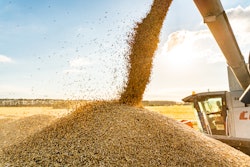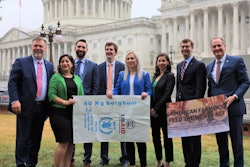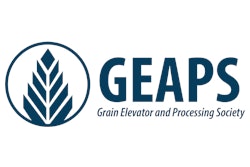
Organizations representing Pacific Northwest wheat growers and the U.S. milling industry are celebrating the latest Food for Peace donation of 28,000 metric tons of U.S. soft white (SW) wheat.
On August 15, 2023, longshoremen at the Port of Longview, Washington, loaded the wheat on the U.S.-flag vessel “Liberty Glory” now bound for the Arabian Peninsula in the Middle East to help alleviate one of the worst hunger emergencies on the planet.
U.S. wheat farmers, U.S. Wheat Associates (USW), the National Association of Wheat Growers (NAWG), and the North American Millers’ Association (NAMA) have been partners in U.S. international food assistance programs for 70 years.
"This recent donation of U.S. wheat symbolizes our commitment to combating hunger and fostering global food security," said Nicole Berg, a Washington wheat farmer and past president of NAWG. "During a journey to Kenya and Tanzania in 2019, I saw firsthand the effects of these life-changing programs and U.S. commodities. In testimony before Congress I shared the story of a man I met there who emphasized his community is always so happy with the high quality of the U.S. food and wheat flour they receive."
Since 2020, Americans have donated more than 1 million metric tons of wheat and millions of dollars in food aid every year, noted the groups. The soft white wheat donation loaded August 15 was grown in Washington state, Oregon and Idaho.
The U.S. has a long history of administering the largest, most diverse, reliable, safe, and effective food assistance programs in the world. Today, the worst hunger crisis in a generation makes U.S. support of food aid programs more important than ever. Yet humanitarian programs like USAID’s Food for Peace program are under intense pressure from some policymakers seeking to cut program funding and divert resources away from emergency hunger needs. In July 2023, USW, NAWG and NAMA sent a letter with 128 other organizations urging lawmakers to support international food aid programs.
Full funding for Food for Peace and other U.S. food assistance programs is critical to addressing the substantial humanitarian feeding needs around the world. Food for Peace demonstrates the success of starting American foreign policy at home, with American farmers and industry, and ending with food in the hands of those who need it the most.
“The U.S. food and agricultural community are unique stakeholders in the international food aid conversation,” Kansas wheat farmer Ron Suppes said in congressional testimony after visiting Kenya and Tanzania on a trip to monitor U.S. wheat food aid programs in 2017. “I want to see us continue our trend of excellence in providing food aid to the countries that need it most.”
Additionally, wheat growers and the milling industry applauded the introduction of the American Farmers Feed the World Act in June 2023. This legislation would “put the food back into food aid” by restoring Food for Peace to its roots as a purely in-kind commodity donation program and requiring that at least half of all Food for Peace funds be used to purchase American commodities and ship them overseas, minimizing administrative costs and restoring accountability and transparency.
“U.S. millers are proud of the role they play in alleviating world hunger through food aid. Today’s wheat shipment is a moving reminder of the need to both protect Food for Peace from harmful budget cuts and support the American Farmers Feed the World Act to ensure Food for Peace funding goes toward feeding as many people as possible in this time of unprecedented hunger,” said NAMA senior director of government affairs Kim Cooper.

















